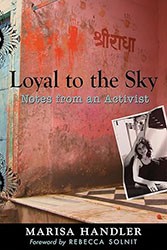LaNitra M. Berger’s study of South African painter Irma Stern is both a timely and a fascinating tale. Irma Stern and the Racial Paradox of South African Modern Art follows white Jewish artist, Irma Stern (1894−1966), from her youth spent in Germany through the genesis of her lauded artistic career in South Africa and abroad, and then to her polarizing legacy.
The first section of the book follows Stern, who was born in the Schweizer-Reneke region of the Transvaal, South Africa, to German Jewish parents, becoming interested in painting during the rise of German Expressionism as a teenager in Berlin under the tutelage of painter Max Pechstein. There, Berger locates Stern within a movement of artists concerned with the political and curious about non-Western visual tropes and communities. In these early years, Pechstein encouraged Stern to engage with politics and pursue her interest in painting subjects with brazen color. The experiences of coming of age in Berlin, surrounded by an idealized conception of Africa, along with the artist’s youth in South Africa, would converge in her work as she balanced her audience’s expectations for imagery of Black Africans together with her actual interactions with local Black people in the Transvaal. This paradox, artfully navigated by Berger, would continue to characterize Stern’s storied career as she navigated her success and the rising racial tensions in South Africa as an era of apartheid dawned.
In addition to highlighting Stern’s complex, questionable stance on race and the developing state-sanctioned racism in South Africa throughout the 1920s through the 1940s, Berger weaves Stern’s fascinating relationship to her Jewish heritage into this narrative as well. Set against the backdrop of fiercely rising antisemitism during the interwar period followed by World War II and the Holocaust, Stern considered her Judaism similarly to how she considered issues of race. Both concerns manifest robustly in her work; however, when directly asked, Stern kept a surprisingly reserved stance on the issues. Despite painting Jewish friends and socially conscious works (both, Berger advises, can be understood as markers of Stern’s commitment to Judaism), Stern continued to support the Afrikaner ethnic Nationalist Party despite its Nazi sympathies and staunch racism, both of which were condemned broadly by South Africa’s Jewish community. Similarly, despite painting rich and moving portraits of Black people throughout the African continent, Stern publicly maintained her support of apartheid in South Africa and the dehumanization of Black people.
Despite the complexity of the life, work, and voice of Irma Stern, Berger adeptly balances the artist’s status as a frontrunner in South African modernism with her minority status as a woman, a Jew, and an artist who, whether intentionally or not, created profound and powerful images of Black people at a time when and in a location where their humanity was disputed. Berger brings the fascinating story of a complicated Jewish artist during the rise of both modernism and apartheid to an audience most likely unaware of her existence. The book is a must-read for all those who consider issues of memorialization, remembrance, and reverence to be central in creating equitable arts and societies today.
Hannah Kressel is a current fellow at the Pardes Institute of Jewish Studies in Jerusalem. She holds a Masters in Art History from the University of Oxford and a Bachelors in Art History and Studio Art from Brandeis University. Her research examines the intersection of contemporary art, food, and religion. She is an avid baker and cook.


